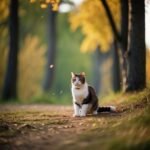8 Fascinating Facts About Bloodhounds: Unveiling the Secrets of These Remarkable Tracking Dogs
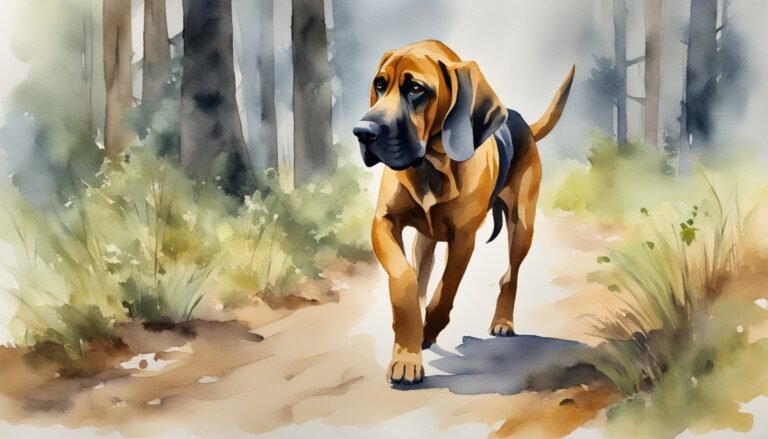
Bloodhounds are a unique breed known for their exceptional sense of smell and distinctive appearance.
These dogs have a rich history and have been used for centuries in tracking and search and rescue operations.
Their long ears and wrinkled skin make them stand out among other breeds.
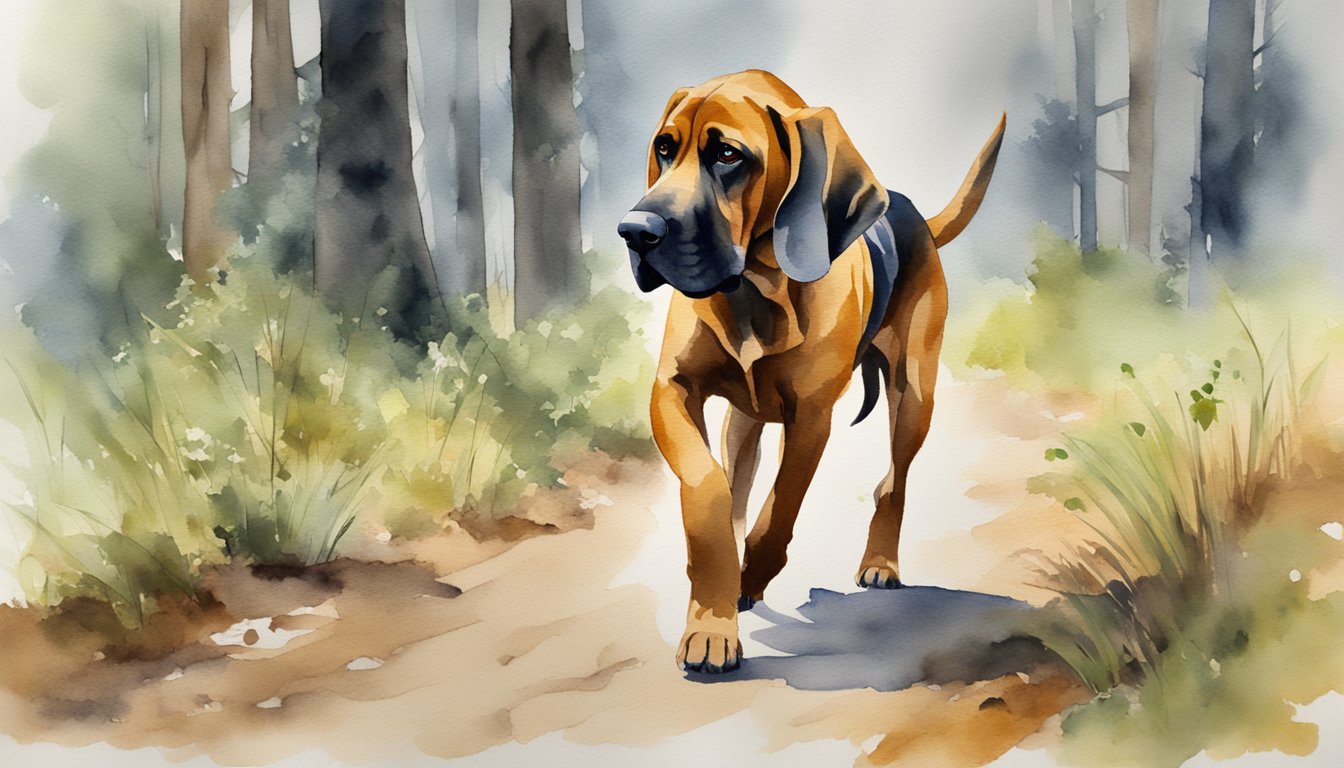
You’ll find that Bloodhounds are more than just talented trackers – they’re also loving family pets with fascinating traits. From their incredible scenting abilities to their role in law enforcement, there’s a lot to learn about these gentle giants.
Let’s explore some interesting facts about Bloodhounds that might surprise you.
1) Unique scenting ability
Bloodhounds have an amazing sense of smell.
Their noses are so powerful that they can follow scent trails that are days or even weeks old.
These dogs have about 300 million scent receptors in their noses.
That’s way more than most other dog breeds.
This gives them an edge when it comes to tracking.
You might be surprised to learn that Bloodhounds can pick up scents even in water.
Their noses are so good that they can smell things underwater.
Their long, droopy ears help with scenting too.
When a Bloodhound puts its nose to the ground, its ears sweep the scent particles up towards the nose.
Bloodhounds are often called “noses with dogs attached” because of their amazing scenting skills.
This nickname shows just how important their noses are.
These dogs can follow a scent trail for miles.
They don’t give up easily once they’ve picked up a trail.
This makes them great for search and rescue work.
Their scenting ability is so trusted that Bloodhound evidence can be used in court.
In many places, their tracking results are accepted as legal evidence.
2) Wrinkles help trap scents
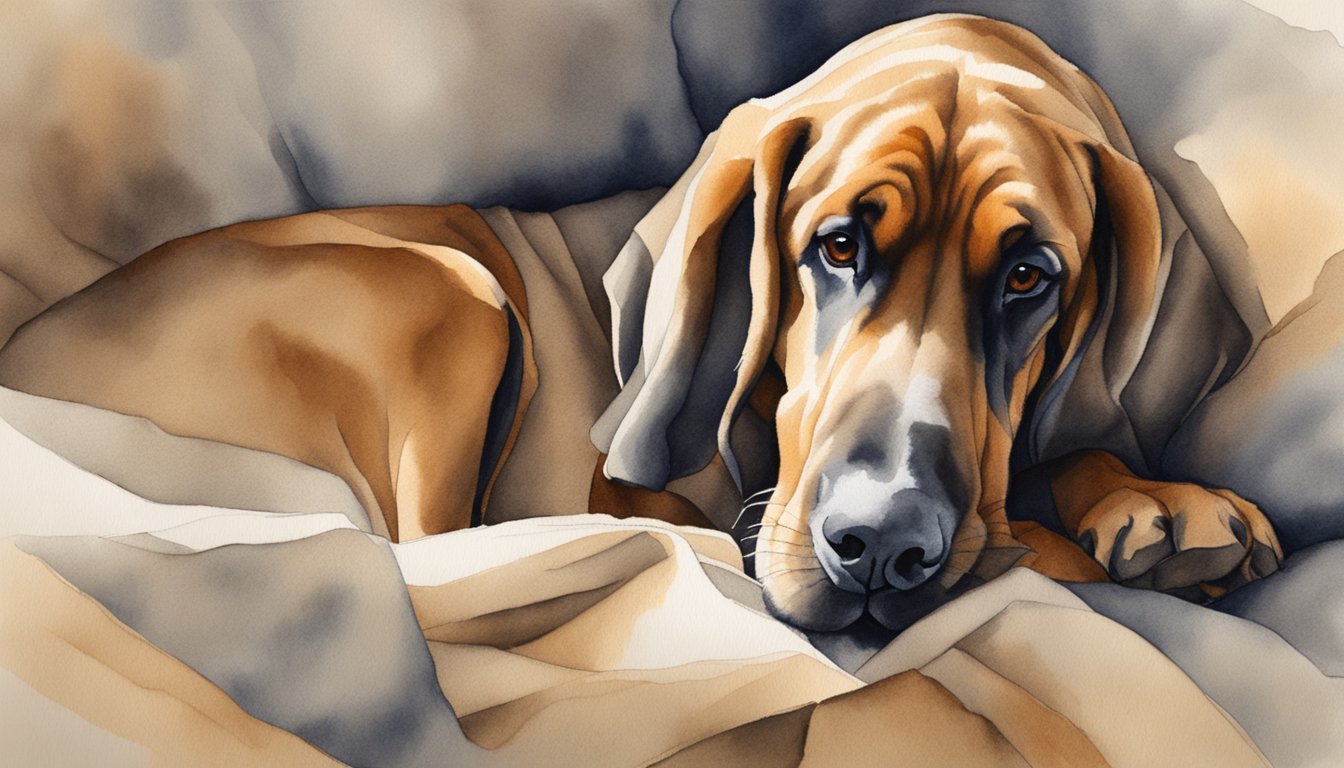
Bloodhounds have distinctive wrinkles on their faces and necks.
These aren’t just cute features – they serve an important purpose.
The wrinkles help trap scents, making the Bloodhound’s sense of smell even more powerful.
When a Bloodhound lowers its head to sniff the ground, the loose skin around its face falls forward.
This creates folds that capture scent particles in the air.
The wrinkles act like little pockets, holding onto smells for the dog to analyze.
You might notice that Bloodhounds have especially droopy ears.
These long, floppy ears also play a role in trapping scents.
As the dog moves, its ears sweep the ground, stirring up scent particles and pushing them towards the nose.
The combination of wrinkles and droopy ears makes Bloodhounds incredibly efficient at tracking scents.
They can follow trails that are several days old, even in challenging conditions.
This unique feature is one reason why Bloodhounds are often used in search and rescue operations.
Next time you see a Bloodhound, take a closer look at its wrinkles.
Remember that these folds aren’t just for show – they’re a key part of the dog’s amazing scenting abilities.
3) Used in criminal investigations
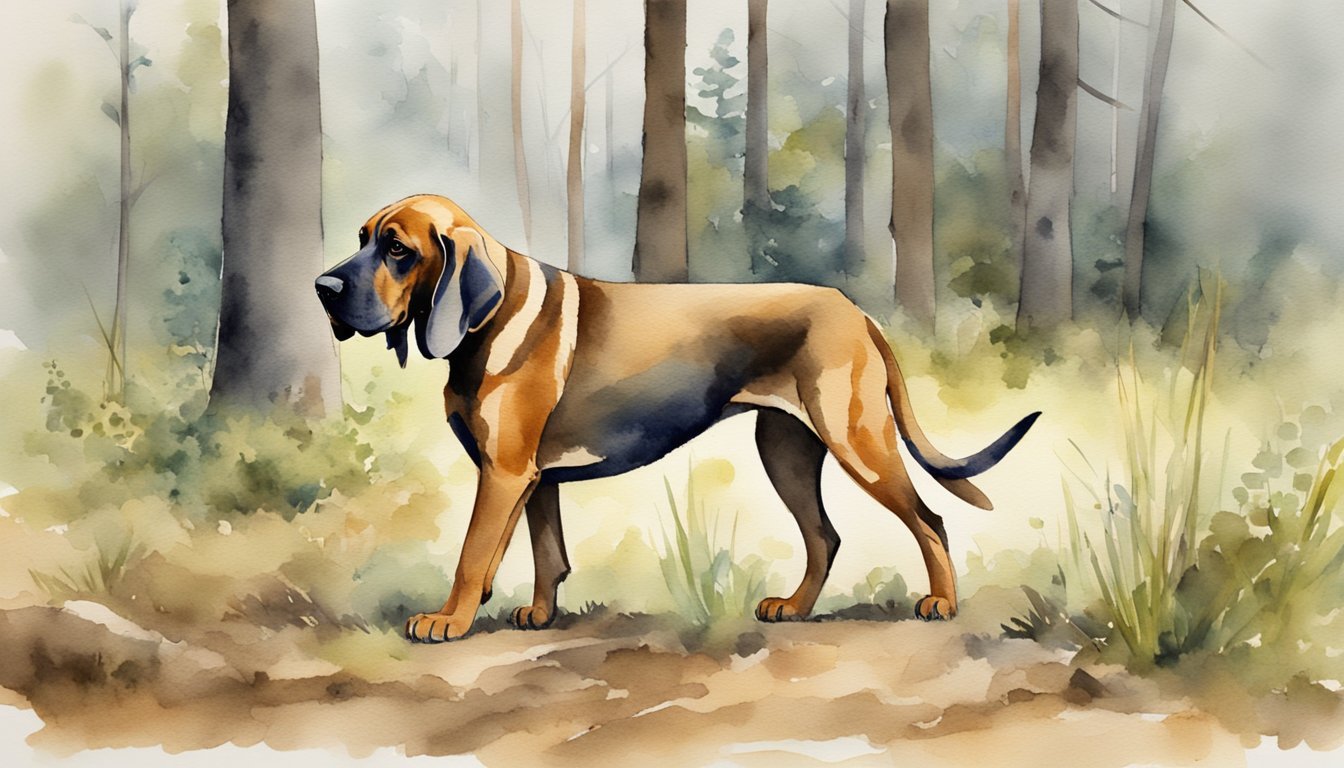
Bloodhounds play a key role in criminal investigations.
Their amazing sense of smell helps police track down suspects and find missing people.
These dogs can follow a scent trail for days over long distances.
This makes them great at finding people who have run away or gotten lost.
Did you know that a bloodhound’s nose work can be used as evidence in court? Their tracking skills are so good that judges trust what they find.
Police use bloodhounds to solve many kinds of crimes.
These dogs have helped with famous cases like the Lindbergh kidnapping and the search for Martin Luther King Jr.’s killer.
Some bloodhounds have special jobs.
For example, Radar the bloodhound is trained to find dead bodies.
He also helps find missing people and track down suspects.
You might wonder how good bloodhounds really are at solving crimes.
A study found that they were right 96% of the time when tracking scents.
That’s why police keep using these dogs to help catch criminals.
4) Recognized by the court
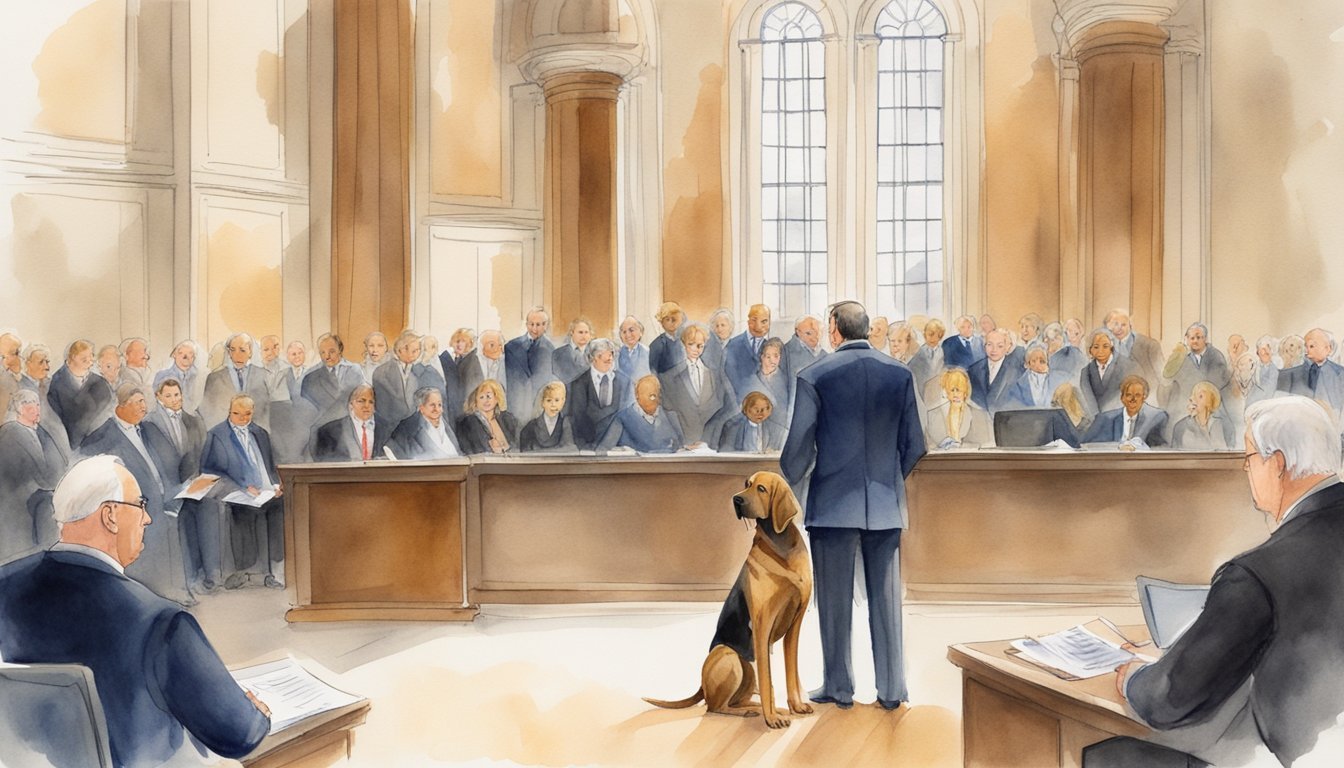
Did you know that Bloodhounds have a special status in the legal system? Their incredible sense of smell is so reliable that courts recognize it as evidence.
Bloodhounds can track scents with amazing accuracy.
Their noses are so powerful that they can follow trails that are days old.
This skill makes them valuable in criminal investigations.
Police often use Bloodhounds to find missing persons or track suspects.
What’s truly remarkable is that a Bloodhound’s scent evidence can be admitted in court.
Judges and juries consider their tracking abilities trustworthy enough to help decide cases.
You might wonder how this works.
When a Bloodhound follows a scent and leads police to evidence or a suspect, that information can be used in legal proceedings.
This recognition by the courts shows how much faith the justice system puts in these dogs’ abilities.
It’s a testament to the Bloodhound’s extraordinary nose and tracking skills.
Remember, not all dog breeds have this special status.
The Bloodhound’s unique talent sets it apart in both the canine world and the legal realm.
5) Can follow trails over 12 days old
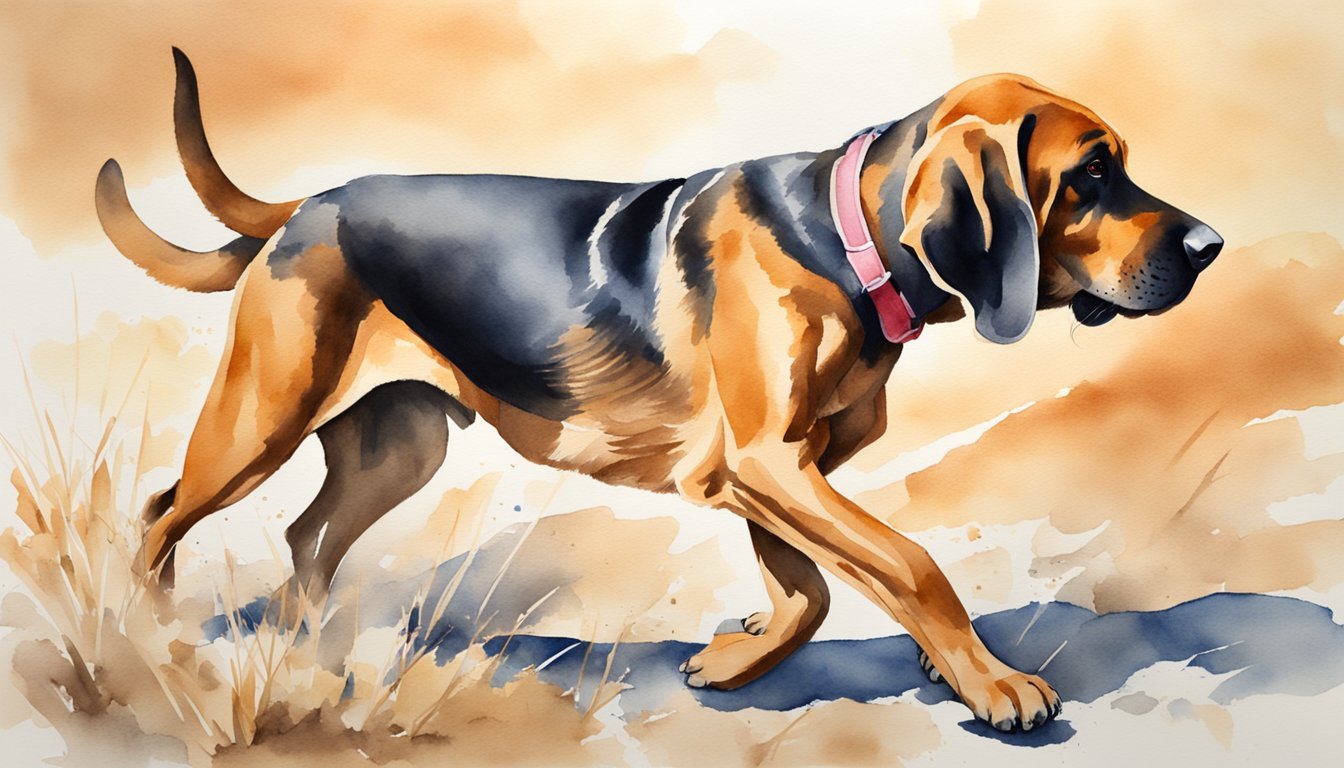
Bloodhounds have an amazing ability to track scents.
Their noses are so powerful that they can follow trails up to 12 days old.
This skill makes them invaluable for search and rescue operations.
You might wonder how they do this.
Bloodhounds have about 300 million scent receptors in their noses.
That’s way more than most other dog breeds.
These receptors help them pick up even the faintest smells.
When a person walks, they leave behind tiny skin cells and bacteria.
Bloodhounds can smell these traces long after the person has gone.
They can even tell the difference between similar scents.
This talent isn’t just for show.
Bloodhounds help police find missing people and solve crimes.
Their nose is so trusted that their evidence can be used in court.
Remember, not all Bloodhounds are trained for tracking.
But their natural ability is still there.
Even as pets, they might surprise you with how well they can follow scents around your home or yard.
6) Long, droopy ears
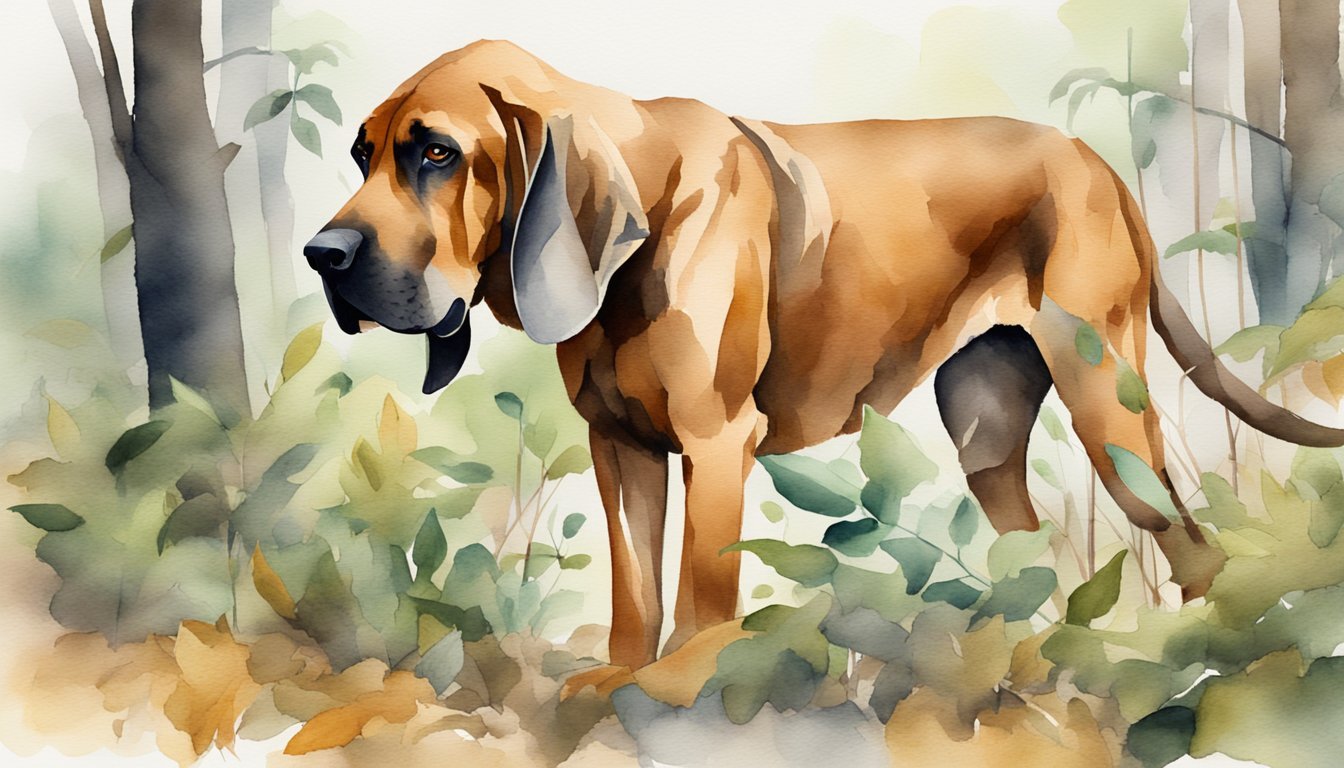
Bloodhounds are famous for their long, droopy ears.
These ears aren’t just for show – they serve an important purpose.
The ears of a Bloodhound can reach up to 13.75 inches in length.
This impressive feature helps them in their tracking work.
When a Bloodhound lowers its head to sniff the ground, its ears sweep the area.
This action stirs up scent particles, making them easier for the dog to smell.
The droopy ears also help funnel scents towards the dog’s nose.
This increases the amount of scent information the Bloodhound can gather.
You might notice that many scent hounds have long ears.
This is no accident.
Breeders have selected for this trait over many generations.
The Bloodhound’s ears require regular care.
Their length makes them prone to getting dirty or infected.
You should check and clean your Bloodhound’s ears often.
Despite their usefulness, these long ears can sometimes get in the way.
They might drag in food or water bowls.
You may need to lift your Bloodhound’s ears when it eats or drinks.
7) Bloodhounds in popular culture
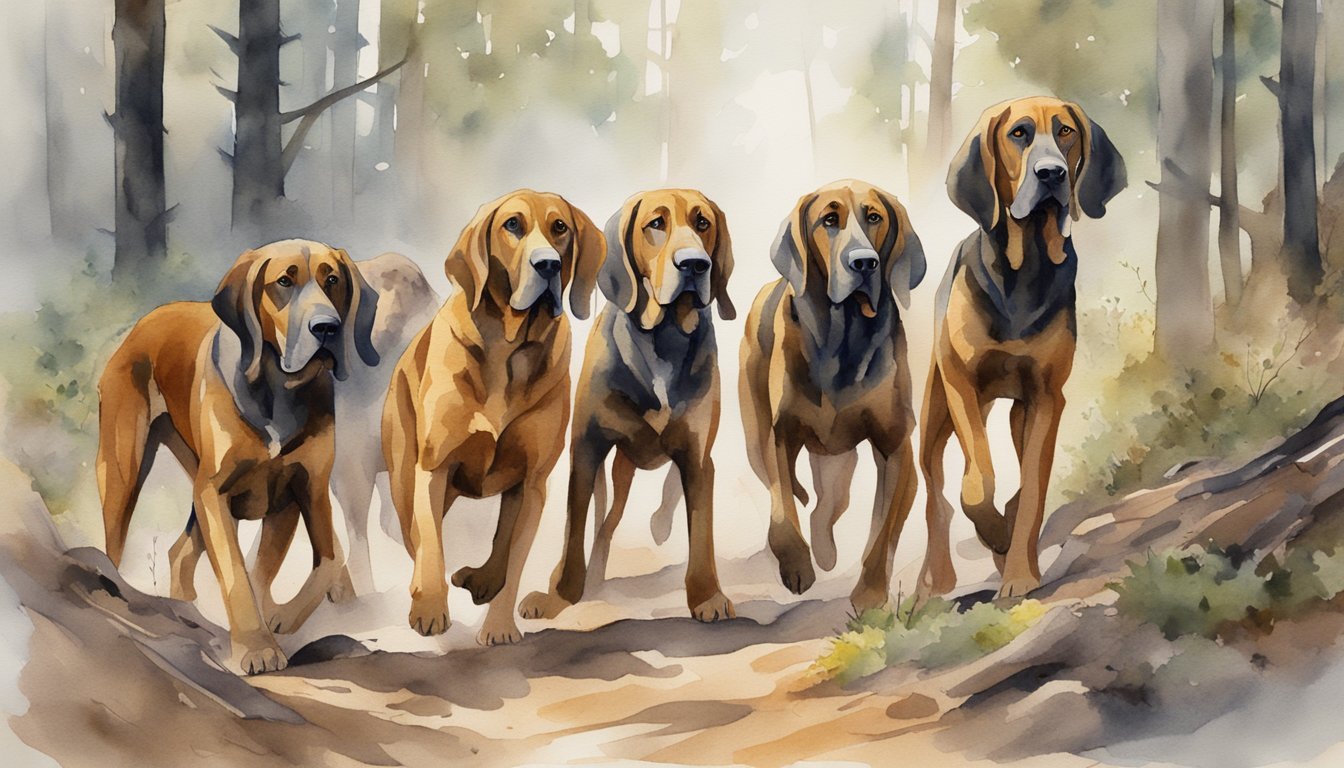
Bloodhounds have made their mark in books, movies, and TV shows.
You might recognize these droopy-faced dogs from popular media.
In literature, Bloodhounds often appear as skilled trackers.
Sir Arthur Conan Doyle’s Sherlock Holmes stories feature a Bloodhound named Toby who helps solve cases.
On the big screen, Bloodhounds have played both comedic and dramatic roles.
The 1987 film “The Aristocats” includes a lovable Bloodhound character named Napoleon.
TV shows have also featured these dogs.
The classic cartoon “The Fox and the Hound” has a Bloodhound named Copper as one of its main characters.
Bloodhounds have even made their way into music.
Elvis Presley’s hit song “Hound Dog” is believed to be inspired by these droopy-eared canines.
In advertising, Bloodhounds are often used to represent keen senses and tracking abilities.
You might see them in commercials for products like air fresheners or cleaning supplies.
These dogs have also become mascots for various brands and sports teams.
The University of Tennessee’s sports teams are known as the “Volunteers,” with a Bloodhound as their mascot.
8) History dates back to medieval times
Bloodhounds have a long and storied past.
Their history goes back to medieval times, making them one of the oldest dog breeds still around today.
These dogs were highly valued by aristocrats in medieval Europe.
Their incredible sense of smell made them perfect for tracking game during hunts.
Monks played a big role in developing the Bloodhound breed.
They carefully bred these dogs to enhance their tracking abilities.
This work took place in monasteries across Europe.
The name “Bloodhound” doesn’t come from tracking blood.
It’s actually linked to their status as a “blooded” hound, meaning they were of pure breeding.
You might be surprised to learn that Bloodhounds were once on the brink of extinction.
Despite this, their amazing skills helped them bounce back.
Over time, Bloodhounds became known for more than just hunting.
Their powerful noses made them valuable for tracking people too.
This skill is still used today in search and rescue operations.
The breed’s looks haven’t changed much since medieval times.
When you see a Bloodhound, you’re looking at a living piece of history that goes back hundreds of years.
The History of Bloodhounds
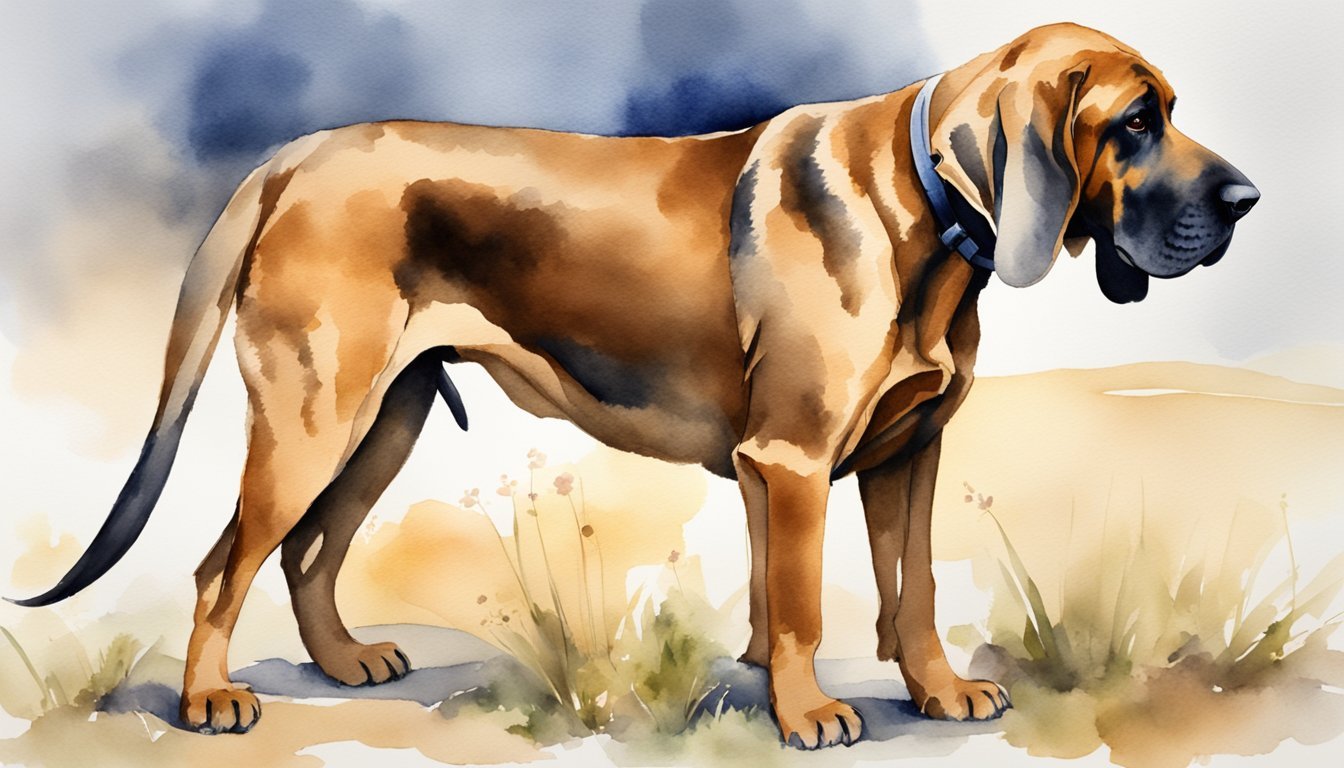
Bloodhounds have a rich history spanning centuries.
Their keen sense of smell and tracking abilities have made them valuable companions to humans for generations.
Origins and Ancestry
Bloodhounds trace their roots back to medieval Europe.
They descended from dogs bred by monks in Belgium around the 8th century.
These dogs were known as “blooded hounds” due to their pure breeding.
The breed gained popularity among nobility and aristocrats.
They used Bloodhounds for hunting and tracking game.
Over time, their exceptional scenting abilities became widely recognized.
Bloodhounds nearly faced extinction in the 14th century.
Fortunately, devoted breeders worked to preserve the breed.
By the 19th century, Bloodhounds had spread to other parts of Europe and North America.
Famous Bloodhounds in History
Bloodhounds have played important roles throughout history.
In the 16th century, Queen Elizabeth I kept packs of Bloodhounds for hunting.
During the American Civil War, Bloodhounds helped track escaped prisoners and missing soldiers.
Their abilities were so respected that their evidence became admissible in court.
Nick Carter, a famous Bloodhound from Kentucky, helped solve over 650 cases in the early 1900s.
His success further cemented the breed’s reputation as exceptional trackers.
In popular culture, Bloodhounds have appeared in literature and film.
The character of Pluto in “The Adventures of Huckleberry Finn” is a well-known literary Bloodhound.
Bloodhound Physical Characteristics
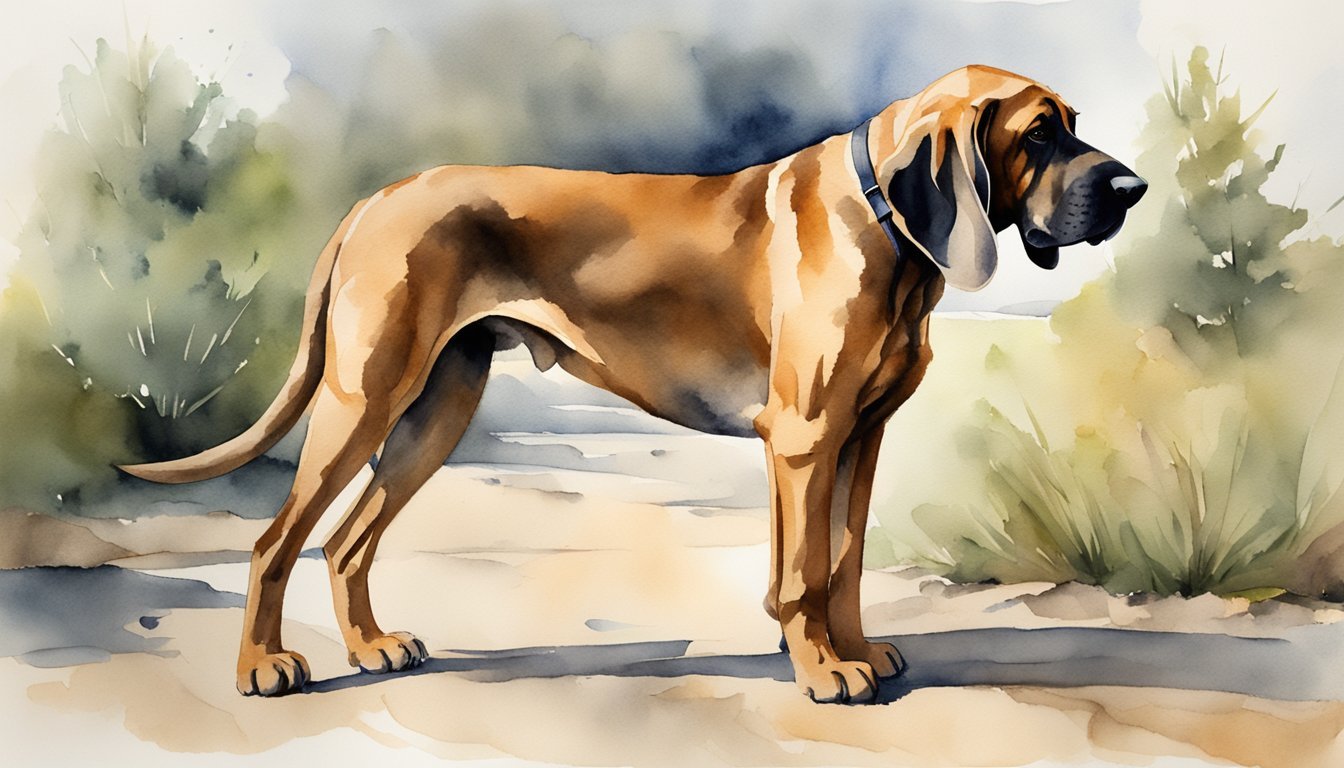
Bloodhounds have a distinctive look that sets them apart from other dog breeds.
Their unique features help them excel at tracking scents.
Let’s explore their facial traits and overall size.
Unique Facial Features
Bloodhounds have long, droopy ears that serve a special purpose.
These ears help stir up scents from the ground as they move.
Their faces are covered in loose, wrinkled skin.
This skin traps odors, making it easier for them to follow trails.
Bloodhounds have large, round eyes that often look sad or tired.
Their noses are large and black, perfect for picking up even the faintest smells.
The skin around their eyes and mouth hangs down, giving them a droopy expression.
Height and Weight
Bloodhounds are big dogs with powerful bodies.
Males are usually larger than females. A male Bloodhound typically weighs between 90 to 110 pounds.
Females are a bit smaller, weighing 80 to 100 pounds.
These dogs stand tall, with males reaching 25 to 27 inches at the shoulder.
Females are slightly shorter, measuring 23 to 25 inches.
Their bodies are muscular and strong, built for endurance during long tracking sessions.
Bloodhounds have short, dense coats that come in different colors.
Common shades include black and tan, liver and tan, and red.
Their coats are easy to care for and don’t need much grooming.
Tracking and Scent Abilities
Bloodhounds have amazing noses that make them great at following scents.
Their tracking skills are used to find missing people and solve crimes.
How Bloodhounds Track Scents
Bloodhounds have over 300 million scent receptors in their noses.
This is way more than other dogs or humans.
Their long ears and wrinkly skin help trap smells and send them to their noses.
When tracking, bloodhounds pick up tiny skin particles called “skin rafts” that people and animals shed.
These particles carry a unique scent for each person or animal.
Bloodhounds can follow old trails too.
They can track scents that are up to 300 hours old.
This skill makes them very useful for search and rescue work.
Real-Life Tracking Examples
Bloodhounds have helped solve many cases.
In one example, a bloodhound named Nick helped find a missing girl in Virginia after she had been gone for two days.
These dogs also work with police to track criminals.
They’ve followed scent trails for miles, even across water and through cities.
Search and rescue teams often use bloodhounds to find lost hikers or missing people.
Their strong noses can pick up scents in tough conditions like rain or snow.
Bloodhounds have even helped in arson cases.
They can smell accelerants used to start fires, helping investigators find evidence.





